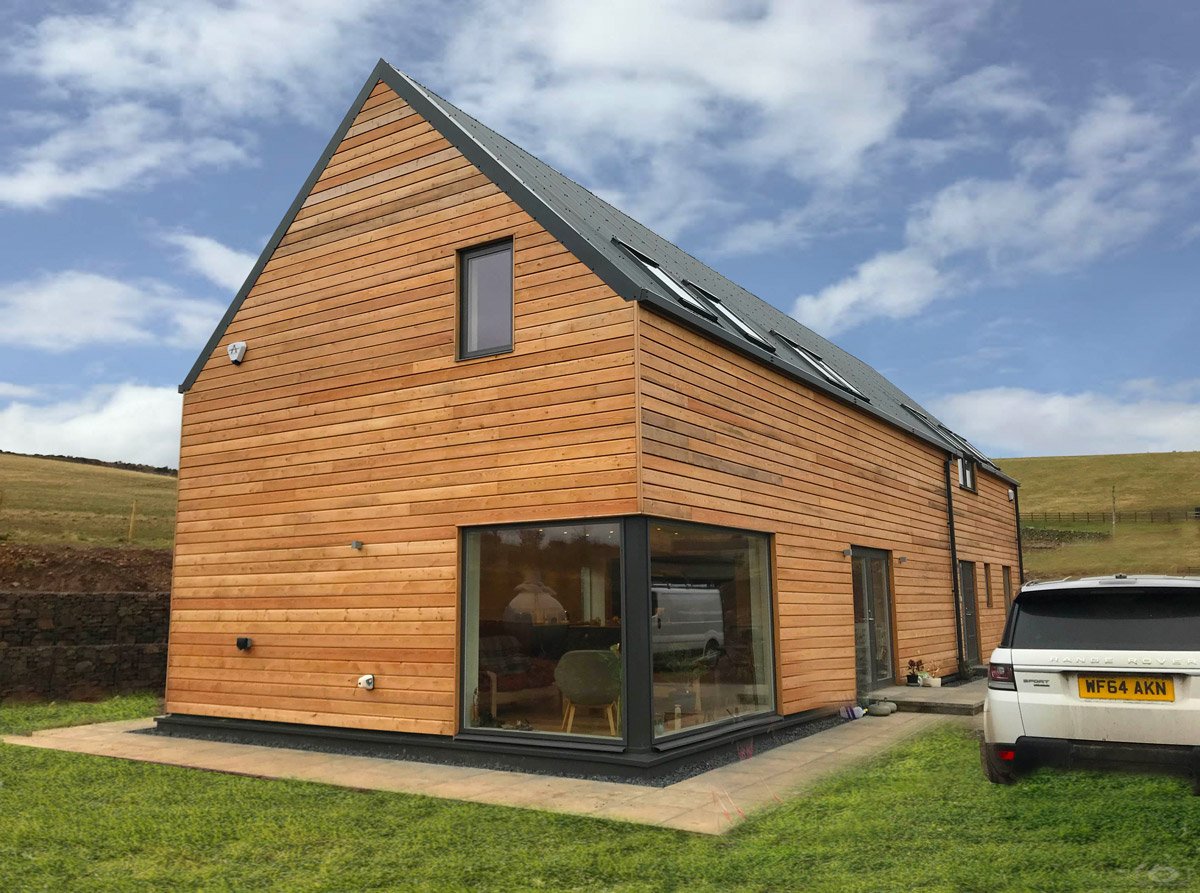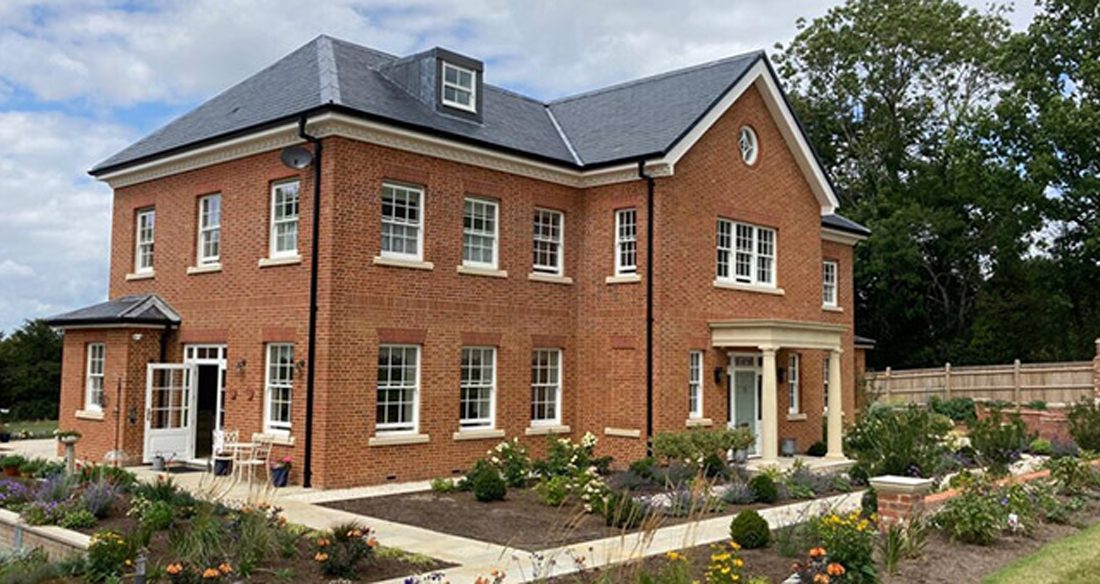You’ve worked for months… perhaps years… to refine your brief. You have confirmed and validated your budget. You have painstakingly compared construction methods and know which one is best for you. You’ve narrowed your list of professionals down to those who you want fee proposals from.
But, there in lies the problem…
As it’s gotten closer to the time to choose your design team, you are getting increasingly worried about whether you will get planning. Your plot of land may be in a planning authority known for lengthy, protracted decisions. Perhaps it may be located in a greenbelt or conservation area.
It may not have any of those obvious issues, but you are still quite nervous about the unknowns of the planning process.
We completely understand. Having dealt personally with local planning authorities from the Midlands to the South West to North Wales to the Highlands, we know that the path to a planning decision doesn’t always feel particularly straightforward or transparent. And unfortunately, there is no silver bullet to guarantee planning success.
Despite all of the research that you’ve done to narrow down the members of your team, you are now contemplating whether it would simply be best to hire a local architect who you can rely on to get you the planning you need.
Before you make your decision, consider the typical complications and how they can be avoided. COMPLICATION #1: NAVIGATING LOCAL POLICY AND GUIDANCE
COMPLICATION #1: NAVIGATING LOCAL POLICY AND GUIDANCE
The local planning authority makes decisions following comments received during a consultation process. All comments received must be considered by the case officer; however, not all comments are material considerations. Key material considerations are based upon the National Planning Policy Framework (NPPF) and the Local Policies included within the Development Plan for the area.
There are many overarching commonalities between these policies (e.g. access, overshadowing/ loss of light, privacy/ overlook and ecology, to name a few). However, there may also be a policy that is more nuanced and related to specific considerations of layout and density, design and appearance or even previous planning decisions.
It is part of an architect’s professional training and expertise to be familiar with planning policies and regulations, regardless of the location. This knowledge is acquired through research, consultation with planning experts, and collaboration with local planning authorities.
While it is true that an architect who works exclusively within the local area will be inherently familiar with these local policies, they may not have much experience overcoming challenging planning applications. An architect who is not based in the local planning authority may have more experience working with a variety of complex planning policies. They may be able to draw on their previous experience to anticipate potential issues and overcome challenges in the planning process. Those experiences result in effective strategies for navigating the planning process and securing planning permission under challenging circumstances.
 COMPLICATION #2: UNDERSTANDING THE LOCAL PLANNING AUTHORITY
COMPLICATION #2: UNDERSTANDING THE LOCAL PLANNING AUTHORITY
Architects who work regularly in a particular area often have established relationships with the local planning authority and have a better understanding of their preferences and priorities. At first glance, this seems to be a real benefit to securing a successful planning outcome. The local architect will know what the local planners like and will therefore be conservative in their design approach as they may be more familiar with what is likely to be approved by the local planning authority.
This could result in a very streamlined design process. However, it is important to note that every architect has their own design style and approach, regardless of their location. Additionally, being more conservative in design does not necessarily mean that the application will be more likely to be approved. Each planning application is considered on its individual merits and must comply with planning policies and regulations, regardless of the design style or approach.
An architect who is not based in the local planning authority may bring a fresh perspective to your project, providing a wider range of design options and styles to choose from. This could be particularly relevant if you are looking for a building design that is unique or stands out from the local context.
Ultimately, the design of your building should be a reflection of your needs, preferences, and budget, as well as the local context and planning requirements (which are all available online…to anyone regardless of location). An experienced and skilled architect should be able to strike a balance between your design aspirations and the requirements of the planning authority, regardless of whether they are local or not.

COMPLICATION #3: UNDERSTANDING THE DEVELOPMENT TYPE
Depending on the development type, there may be different routes to a successful planning application. A replacement dwelling may not be as simple as proposing a two-storey house on the footprint of an existing bungalow. A new build on an agricultural plot may first need to be posed as a barn conversion (ie Class Q conversion). Access that seems obvious to you may not be as straightforward to the Local Planning Authority.
An architect who has a proven track record in a variety of different application types may have relevant experience in a scenario that is similar to your own. Even if it is not in the same local authority, there are often overarching lessons to be learned and applied from one planning authority to another. It’s important to hire an architect who has experience in the type of development you are proposing and who can demonstrate a track record of successful planning applications.
Many architects are comfortable handling a series of different planning scenarios; however, they will also have the experience to know when a larger support team is required. For complicated planning scenarios, your project may benefit from an architect with established relationships with planning consultants or other experts who can support the planning process. This could potentially streamline the planning process and increase your chances of success.
Similar to the availability of local policy and guidance, all local authorities publish requirements for supporting documentation for each planning application type. An experienced architect will be able to understand those requirements. They will also know when to advise if there are any grey areas for your project. This will allow you to know what you might expect and offer you options for de-risking the submittal.
Key to a successful planning application is a set of supporting documentation that provides a positive case for your proposed development. This is achieved through a carefully worded Design and Access Statement, which references policy and illustrates how the design fits within that policy. Illustrative plans and photorealistic renders help the planners visualise the proposal. It is important to leave little to question so the case officer can easily understand the proposal within its context without having to imagine or guess the end result.
When selecting an architect, ask to see examples of their previous planning submittals. This will ensure that they are able to use tools that not only help the planners visualise the design, but it also gives you the same assurance for yourself.

TOP TIPS WHEN DECIDING ON CHOOSING THE RIGHT ARCHITECT FOR YOUR PROJECT
- Choose an architect with recent planning success and demonstrated knowledge of navigating local policies (regardless of whether they are your project’s local policies).
- Strike a balance between planning requirements and your aspirations.
- Look for a proven track record for your project type.
- Find an architect with experience with your preferred construction method
- Visualisation is key to planning (and project) success.
- Select a design team who you can comfortably work and communicate with.




